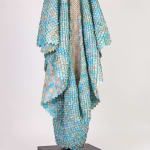



 Cocha the goddess of the water
Cocha the goddess of the water
 Cocha the goddess of the water
Cocha the goddess of the water
 Cocha the goddess of the water
Cocha the goddess of the water
 Cocha the goddess of the water
Cocha the goddess of the water
 Copacati the Lake Guardian
Copacati the Lake Guardian
 Copacati the Lake Guardian
Copacati the Lake Guardian
 Copacati the Lake Guardian
Copacati the Lake Guardian
 Copacati the Lake Guardian
Copacati the Lake Guardian
 Coyllur the deity of light and stars
Coyllur the deity of light and stars
 Coyllur the deity of light and stars
Coyllur the deity of light and stars
 Coyllur the deity of light and stars
Coyllur the deity of light and stars
 Lilapu the rain giver
Lilapu the rain giver
 Lilapu the rain giver
Lilapu the rain giver
 Lilapu the rain giver
Lilapu the rain giver
 Lilapu the rain giver
Lilapu the rain giver
 Lilapu the rain giver
Lilapu the rain giver
 Kilal the Incan Moon goddess
Kilal the Incan Moon goddess
 Kilal the Incan Moon goddess
Kilal the Incan Moon goddess
 Killa the Incan Moon goddess
Killa the Incan Moon goddess
Catalina Swinburn b. 1979
No Land: The Water Ceremony, 2024
Woven vintage atlases and archival documentation, metal stands, wooden plinths
Variable dimensions: 5 sculptures, 350h x 130d x 130w cm each
CS-000323
Further images
-
(View a larger image of thumbnail 1
)

-
(View a larger image of thumbnail 2
)

-
(View a larger image of thumbnail 3
)

-
(View a larger image of thumbnail 4
)

-
(View a larger image of thumbnail 5
)

-
(View a larger image of thumbnail 6
)

-
(View a larger image of thumbnail 7
)

-
(View a larger image of thumbnail 8
)

-
(View a larger image of thumbnail 9
)

-
(View a larger image of thumbnail 10
)

-
(View a larger image of thumbnail 11
)

-
(View a larger image of thumbnail 12
)

-
(View a larger image of thumbnail 13
)

-
(View a larger image of thumbnail 14
)

-
(View a larger image of thumbnail 15
)

-
(View a larger image of thumbnail 16
)

-
(View a larger image of thumbnail 17
)

-
(View a larger image of thumbnail 18
)

-
(View a larger image of thumbnail 19
)

-
(View a larger image of thumbnail 20
)

-
(View a larger image of thumbnail 21
)

-
(View a larger image of thumbnail 22
)

-
(View a larger image of thumbnail 23
)

In the installation No Land: The Water Ceremony five giant woven paper cloaks stand like ritual sentinels in the space. Residual garments of the artist’s performance, these “ritual investitures” salvage...
In the installation No Land: The Water Ceremony five giant woven paper cloaks stand like ritual sentinels in the space. Residual garments of the artist’s performance, these “ritual investitures” salvage and revive an ancestral rite of gratitude to water in relation to Inca sacred places, geography and memory. Known as the “water ceremony”, messengers, mythical and historical figures dressed in ceremonial garments carry water from the sea to each archaeological centre from the Andes mountains, celebrating water as a vital element for humanity. The artist constructs the garments by intricately weaving specific cuttings from vintage atlases and cartographic documents discarded from public libraries. Through this labour-intensive technique, the material transforms from delicate pages of books into robust, even armour-like attire. The weaving’s stepped patterns also recall the sacred ruins and old scaffold textiles used in Andean culture as well as the practice of weaving as the embodiment of collective and female resilience.
NEWSLETTER
Get the latest updates on exhibitions, art fairs, events and exclusive content from Selma Feriani Gallery.
* denotes required fields
We will process the personal data you have supplied in accordance with our privacy policy (available on request). You can unsubscribe or change your preferences at any time by clicking the link in our emails.